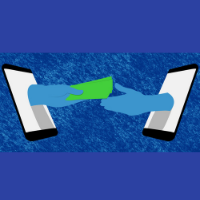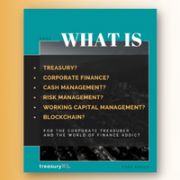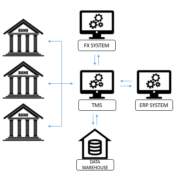Cash forecasting 2.0
| 8-3-2017 | Nicolas Christiaen | Cashforce | sponsored content |

Cash forecasting has been a hot topic in 2016 and it looks like it will keep this status in the years to come. As Cash Specialist, I’m frequently asked about my vision on this subject. About a month ago, I presented my thoughts to an audience of Group Treasurers & CFOs at the ACT Smart Cash conference in London. During the Q&A, I was asked an intriguing question: “How does a cash management platform, such as Cashforce, differentiate itself from old school Treasury Management Systems in terms of cash forecasting?”
TMS vs. Cash Management/Forecasting platform
Classic Treasury Management Systems (TMS) are focused on inputting, maintaining & managing complicated financial instruments and managing bank connectivity. In other words, they focus on cash optimization from the treasury side.
Cash management & forecasting platforms, on the other hand, focus on cash optimization from the business side. Hence, they typically connect to a company’s ERP systems, in which you’ll find 90% of the company’s cash flows.
And guess what, it’s this refreshing vision on cash optimization that is now attracting the attention by more and more Corporate Treasurers worldwide: they call it “connecting treasury with the business”.
Difference No 1: Transparent cash forecasting
With a classic TMS, a Corporate Treasurer will typically consolidate cash forecasts from the different OpCo’s, which are already consolidated from the underlying business transactions. So, there is no drill-down available into the business drivers, no assurance on the quality of the data/input/manipulations. This blurs a treasurer’s view on what’s actually happening on the business side, taking away the cash visibility into the company’s different OpCo’s. Full drill down isn’t offered by a classic TMS due to two main reasons:
- It is simply not designed for carrying millions of transactions on a daily basis, while cash management/forecasting solutions use a ‘big data’ approach and have built-in engines to process millions of transactions daily.
- Connecting to each single ERP requires deep knowledge of each of these systems (to avoid long implementation times) and traditionally, Treasury Management Systems didn’t have a need to develop these connectors.
Difference No 2: Collecting the data in a smart way
One of the pain points often linked to Cash Forecasting, is the lacking ability to merge all relevant data and apply smart logics to it. Indeed, it might be a challenge to connect to all data sources and, at the same time, to do this in a smart way. At Cashforce, our reaction to this issue is twofold: A smart logics engine takes care of the forecasting algorithms, while easy connections to ERPs and other systems (like HRM, CRM..) ensure the continuous supply of rich data.
Defining and applying smart logics are often a challenge to overcome and have an enormous impact on the accuracy of the cash forecast. For example, well-defined smart logics help you to better estimate actual payment times and hence improve the accuracy of a forecast. A TMS system often lacks this powerful ability and has no built-in smart engine for forecasting rules.
Difference No 3: Cash saving from the business instead of treasury optimizations
Finally, driving action from forecasts should be the main objective. Intelligent simulation engines enable companies to consider multiple scenarios and measure their impact. This gives users the power to report on cash saving opportunities and compare options to ultimately pick the better one. As a result, finance departments can be turned into business catalysts for cash generation opportunities throughout the company. In contrast, Treasury Management Systems are not designed to perform complicated business-driven cash simulations.
Complementary or Competitors?
New, often innovative cash management platforms, like Cashforce, are complementary to a TMS and tend to bring a lot of value in working capital intensive businesses. They are complementary, as they have a different focus: Treasury Management Systems look at the entire treasury spectrum in order to improve treasury processes. Cash Management/Forecasting platforms start from the business and want to enable finance departments to become a strategic partner on one of the key growth indicators, cash. On the other hand, for smaller companies, these platforms might be a good alternative for an often expensive TMS, when only limited financial instrument management functionality is required.

Managing Partner at Cashforce









